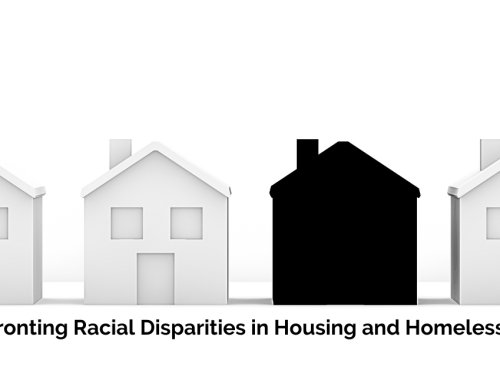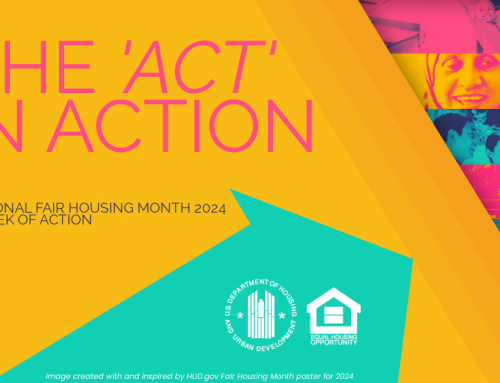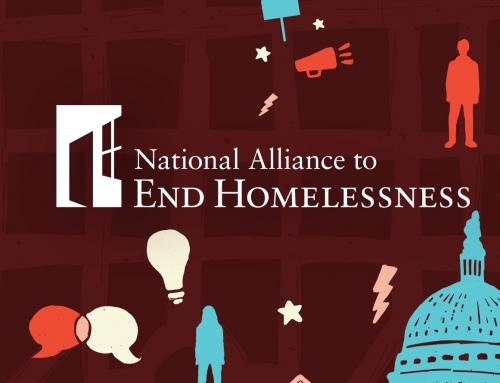Ending Homelessness with Scattered Sites Housing
This post was originally written for Poverty Insights on April 7, 2010
Permanent Supportive Housing: Scattered Sites Model
There seems to be an increased interest in addressing homelessness in the Phoenix metropolitan area. I’m not certain what to attribute this phenomenon to; whether inspirational leadership, increased capacity in the non-profit housing and service provider industry, favorable policies emerging from the public sector, or a heightened awareness resulting from increased media coverage of our current economic climate. Rather than speculate on the reasons for the heightened attention, we need to harness the momentum and act swiftly.
We all know that housing is the solution to homelessness. More specifically, permanent supportive housing ends homelessness. So how do we capitalize on the current interest in homelessness and create permanent supportive housing options in our communities? I believe we need to invest in tenant-based, scattered sites supportive housing, which is the most effective way to rapidly re-house individuals and families experiencing homelessness.
For 16 years the organization I run, HOM, Inc., has administered scattered sites supportive housing programs targeted to individuals with serious mental illness exiting homelessness in Phoenix and its surrounding communities. Our housing programs provide permanent supportive housing to approximately 1,100 households per month. From this perspective, I can speak to the advantages of utilizing tenant-based scattered sites supportive housing as a strategy to end homelessness.
Scattered Sites
A tenant-based, scattered sites supportive housing program is one in which a monthly rental subsidy is provided to an individual or family to assist them in renting a privately-owned dwelling unit in the community. Participants need not be employed or have another income source, as their contribution towards the rent is based on their income.
Participant pays 30% of their adjusted monthly income towards the monthly rent for their housing, with the balance paid by a subsidy from a housing provider. Usually the lease is between the program participant and the landlord, signed in connection with a housing assistance payment contract between the landlord and housing provider.
Rent must be reasonable in comparison to similar unassisted dwelling units in the targeted community and generally may not exceed HUD’s Fair Market Rent for the area. The unit must also be decent, safe and sanitary, and must pass a housing quality standards inspection in order to qualify for the rental assistance.
In addition to monthly rental assistance, supportive services are provided to participants in their homes. Appropriate supportive services are an absolute necessity in any permanent supportive housing program, which may be costlier to administer in a scattered sites program, especially over a large geographic area.
Supportive services are based upon the individual’s needs. Services may center on a person’s disability or their need for skills development around living independently in their own housing. Together with wrap-around supportive services, a tenant-based scattered sites housing model provides many benefits to program participants, housing providers and the communities that they are operated in.
Housing Choice
Providing an individual or family with an opportunity to rent a home in the open market affords the highest level of choice in housing. Some will argue that a person who is currently without a home would be happy with any housing opportunity. I disagree. I think a person should be able to choose which neighborhood they want to live in, whether at a small duplex, large apartment community, or a guest house in someone’s back yard.
This autonomy contributes to the formerly homeless person’s integration into the community and enhances independence. With single-person households, generally the target housing option is an apartment. Living in an apartment community with neighbors of various socioeconomic backgrounds creates opportunity for social engagement and the development of natural supports.
Alternatively, in a single-site development that is specifically designed for a target population, the opportunity for community integration is lessened. Single-site projects can also inadvertently create a concentration of severely impoverished residents with similar challenges, creating a stigmatization of the housing which can negatively impact a person’s psychological well-being. Having choice in one’s housing positively relates to higher satisfaction with housing option.
Financial Impact on Communities
Scattered sites supportive housing programs provide a positive financial impact to communities. HOM, Inc. provides rental assistance to over 450 different apartment communities, property management companies and independent rental property owners. These programs provide landlords with a stable stream of tenants and rental income – especially critical in our current housing market.
Positive relationships with private landlords are a crucial component of a successful program; not only to maximize housing choice but also to provide participants with supportive environments where landlords work as partners in the program. Our program landlords relax tenant selection criteria for applications, reduce or waive required deposits, and work proactively with us to support our participants in their housing. This includes counseling participants in tenant compliance matters and cooperating with supportive service provider staff to allow appropriate intervention, when necessary, instead of opting immediately for normal non-compliance measures, including eviction from housing. This assistance and cooperation increases the rate of housing retention for program participants.
Cost
A tenant-based, scattered sites supportive housing program is far less costly, in the short term, to launch and administer. The program only requires funding for the ongoing monthly rental assistance payments. Different funding sources may also provide funding for additional important activities; including security deposits, tenant-caused damages and vacancy loss.
The cost of the monthly rental assistance may also decrease over time as program participants’ incomes increase; whether through the attainment of employment or through receipt of benefits such as Social Security disability benefits. HOM programs provide housing assistance to 1,100 households on a monthly basis for approximately $7 million annually, or about $530 per household per month. This figure represents the cost of the housing only, and does not include the cost of providing supportive services.
In comparison, a single-site supportive housing development planned to break ground in Phoenix this year has an estimated price tag of just over $15 million. The development will have 65 units and not all of them will be targeted for persons experiencing homelessness. It will also not be ready for occupancy for another 18 months.
Effective Strategy
Ending homelessness requires strategies around prevention, re-housing and supportive services. A tenant-based, scattered sites supportive housing program is an effective strategy for providing rapid re-housing options with supportive services to persons experiencing homelessness. It is not the only viable model for permanent supportive housing. We need as many options available that we can envision and create, including project-based, single site developments. To be successful in our efforts towards any of these strategies to end homelessness, we need innovation, political will and community awareness and involvement. In Phoenix, I’m seeing the light at the end of the tunnel.








